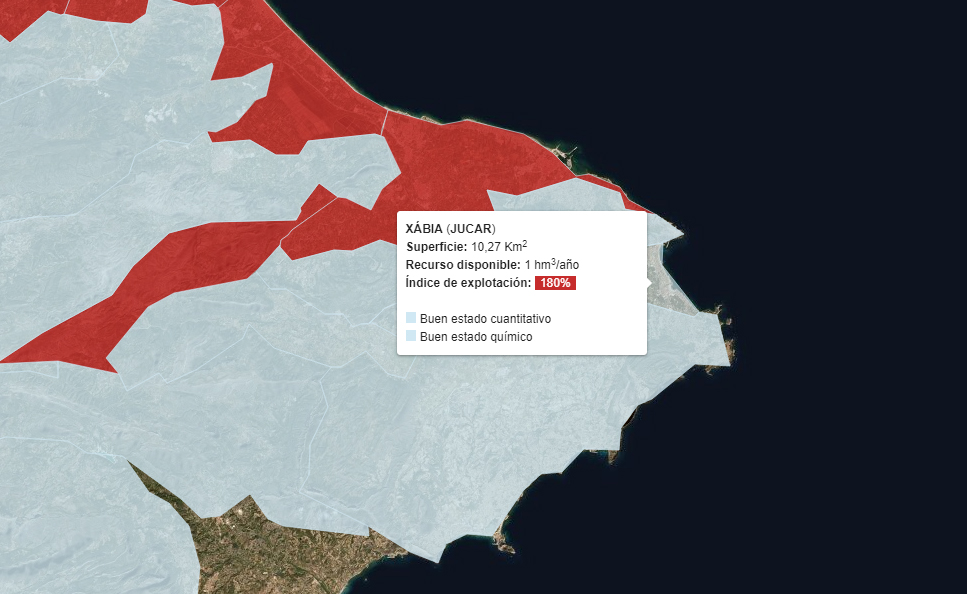Greenpeace highlights overexploitation of Xàbia’s groundwater
The NGO claims that 180% of the capacity of the groundwater mass in Xàbia is exploited annually.

Friday 7th October 2022 · Mike Smith
Source: Álvaro Monfort (XAD)
The SOS Aquifers report prepared by Greenpeace on the 804 bodies of groundwater in Spain has revealed the growing problem of water reserves in the peninsula and, specifically, that 47% of the groundwater in the Júcar basin is in a bad condition.
This last fact is especially worrying given that half of the aquifers are used for human supply. The Marina Alta is one of the regions supplied by the Júcar hydrographic basin.
According to the NGO, the main factors that affect the aquifer are its overexploitation for intensive irrigation and the contamination of groundwater due to the filtration of nitrogenous fertilizers and other chemical compounds such as phytosanitary products, especially pesticides.
Even with everything, the region is not the most affected by the poor state of the Júcar basin. In fact, in a detailed map prepared by the entity, the state of the different underground water masses that run through and supply La Marina Alta can be seen. According to the map, the masses of Montgó, Xàbia, the depression of Benissa, Gorgos, and Pedreguer presents a good quantitative and chemical state.
However, the mass that worries given its poor condition is that of Ondara-Dénia. With a total area of 83.11 km² and available resources of 13.7 hm³ per year, some 270% of its capacity is exploited and its waters are in poor condition at a quantitative and chemical level. This is due to different factors such as an “alteration of the direction of the water flow due to saline intrusion”, “a drop in the water table – depth of the aquifer and volume of water – due to extractions”, “contamination by nutrients, especially nitrates of fertilizers and animal excrements, above the legal limit or in the permitted limit” and “salt intrusion or contamination”. Considering these parameters, the situation of this mass is worrying.
It also indicates as data to take into account that both the masses of Xàbia and Pedreguer have a high rate of exploitation taking into account their water reserves. In the case of the former (with an area of 10.27 km² and available resources of 1hm³/year), 180% of its capacity is exploited. In the case of the second (with a surface area of 39.47 km² and reserves of 6.7 hm³/year), 110% is extracted. The difference in account of size, quantity and exploitation is evident.
As stated in the presentation by the executive director of Greenpeace, Eva Saldaña: ”If the Hydrographic Confederations and governments, of whatever political leaning, do not begin to take this problem seriously or, if they continue with the same policies of waste, aggression and water contamination, this country may find itself in serious trouble in the coming years to deal with supply.
Among the measures proposed by the NGO to combat this problem and that could benefit La Marina Alta are: overcoming the traditional hydraulic policy, focused on the execution of large works, and addressing a true just hydrological transition that responds to the current context; reducing water consumption, mainly due to intensive and industrial irrigation; closing the illegal wells scattered throughout the region (there are more than a million in the entire Spanish geography) and directing agricultural and livestock policies towards sustainability and the reduction of consumption.
Original Article: Greenpeace señala una sobreexplotación de las aguas subterráneas de Xàbia
Related Link: SOS acuíferos: la grave situación de nuestras reservas de agua subterránea




